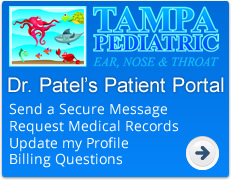|
|
 |
|||||||
Allergy TestingSkin Testing:Skin testing is generally performed in two parts: skin prick and injections. First, we use a multi pronged plastic device which irritates the skin but does not pierce it. Then, we place small injections just under the skin, using a small needle, which looks like mosquito bites. Complete skin testing takes about one hour and you will know exactly what you are allergic to by the end of the hour. Skin testing is the preferred method of determining environmental allergies because it is the most sensitive method. Skin Testing for Foods:Food allergies are highly underestimated, and should be tested for in every patient undergoing allergy testing. Identifying a major food allergy may have great impact on your life. The problem with food allergies is the wide range of potential symptoms and the delayed onset of reactions, making it nearly impossible for anyone to figure out the connection. Some people have immediate throat closing when ingesting peanuts or diarrhea every time they drink milk, but for most people, the delayed food allergies present more subtlety, like chronic sinus or ear infections, throat clearing, constipation, skin itching, or gastroesophageal reflux. We are capable of testing for an extensive number of foods by skin prick testing. There is controversy about the accuracy of skin testing for foods. We always recommend follow up food challenge testing (see below) to confirm skin prick positive foods. There are many advantages to skin testing for foods. We are able to test for a large number of foods at one time. The size of the reaction may reflect the severity of symptoms. We do not skin test foods causing life threatening reactions or anaphylaxis. We are most interested in common foods which typically make you sick 6-12 hours after eating your food, and cause many different chronic symptoms affecting not only your gut, but your ear, nose, throat, or skin. Pediatric Skin Testing:For children and patients fearful of needles, we will prescribe Emla cream to be applied to the skin prior to skin testing. If applied correctly, you will not feel any pain or discomfort during skin testing. We routinely test young children without difficulty. We also provide toys and movies to help make the testing experience fun and less traumatic. Blood Testing:For patients with severe skin conditions or fear of needles, it is also possible to determine your allergies by drawing blood. It generally takes several weeks to get results back. We generally prefer to skin test if possible due to greater accuracy. All allergy testing measures the quantity of IgE (immunoglobulin specific for allergy) in our body. 95% of the IgE is bound to mast cells located on the skin or mucous membranes. Only 5% circulate in the blood stream. Therefore, skin testing is a more accurate method than blood testing. Patch Testing:We have the ability to test chemicals (hair dye, fragrance mix), metals (nickel), and food additives (food dyes, preservatives, MSG). Chemical allergies can be detected by placing a patch on your back. The patch is impregnated with various chemicals and placed on the skin for three days. A raised, itchy red reaction confirms a chemical allergy. Since the patch must be removed three days later, you must have the patch placed on a Monday (to be removed on Thursday) or Friday (to be removed Monday). If you are concerned about an allergy to a specific item such as a lotion or fabric, please bring the items in with you on the day of testing to be placed on your back. Provocative food and chemical challenges:By placing different concentrations of foods or chemicals under your tongue, it is possible to trigger your allergic reaction. This testing is performed in our office and takes about 2 hours. We generally test three food items at one time. Compared to the Home Food Challenge Testing, this method is easier and quicker because the patient does not eliminate any foods from the diet. Home Food Challenge Testing:Food challenge testing is the best method of figuring out whether or not you have a food allergy, but it is very time consuming. Many of our patients have benefited from home food challenge testing. A positive food challenge will show you the manifestation and severity of your allergy to a specific food. We are most interested in the hidden food allergies, typically to common foods such as wheat, egg, milk, soy, baker’s yeast, and corn.
|
| © Tampa Ear, Nose & Throat Associates | Otolaryngology | 3000 Medical Park Drive, Suite 200, Tampa, FL 33613 | Disclaimer Privacy & Terms of Use Meet Our Staff | Our ENT Specialties | Conditions & Treatments | Referring Physicians | For Patients | Video Education & News | Appointments & Locations Allergies | Larynx Voice | Nose & Sinus | Office Based Procedures | Pediatric ENT | Snoring & Sleep Apnea Advanced Technology | Cerumen Removal | Septoplasty | Sinusitis | Swimmers Ear | Tinnitus | Tonsils & Adenoids | Vertigo | Thyroid & Parathyroid Powered by MedCoData |
